Find Help
More Items From Ergsy search
-
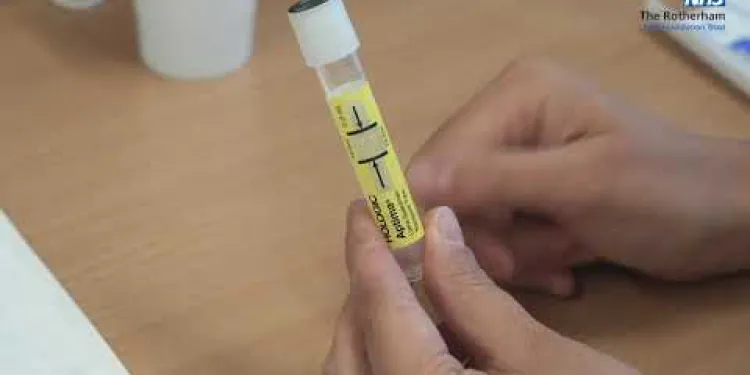
Urine test for Gonorrhoea and Chlamydia
Relevance: 100%
-

Urine test for Gonorrhoea and Chlamydia
Relevance: 100%
-
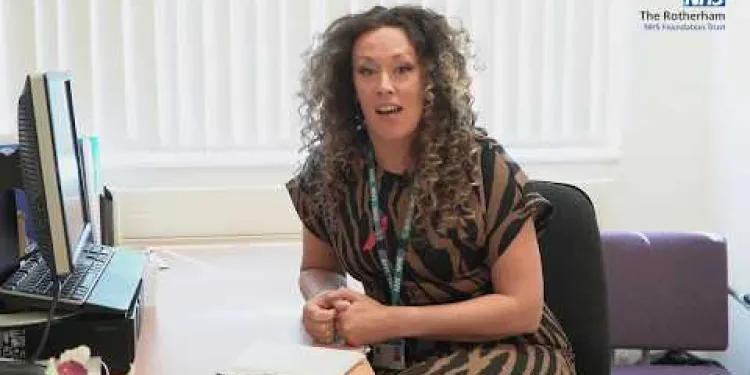
Vaginal Swab test for Gonorrhoea and Chlamydia
Relevance: 71%
-
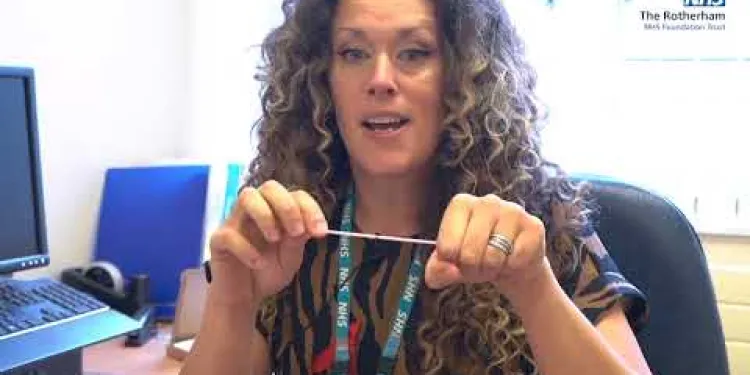
Rectal swab test for Gonorrhoea and Chlamydia
Relevance: 68%
-

Pharyngeal swab for Gonorrhoea and Chlamydia
Relevance: 63%
-
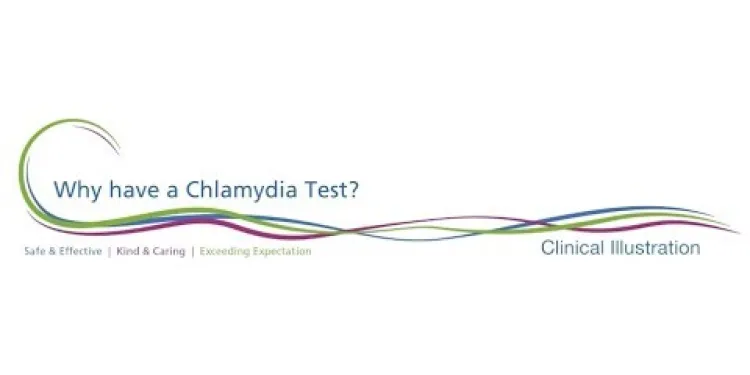
Getting tested for Chlamydia
Relevance: 53%
-
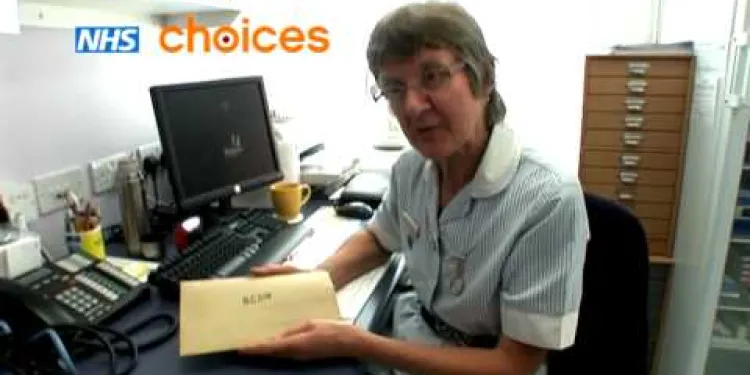
NHS - Chlamydia
Relevance: 45%
-

What is chlamydia?
Relevance: 44%
-

How is gonorrhoea diagnosed?
Relevance: 43%
-
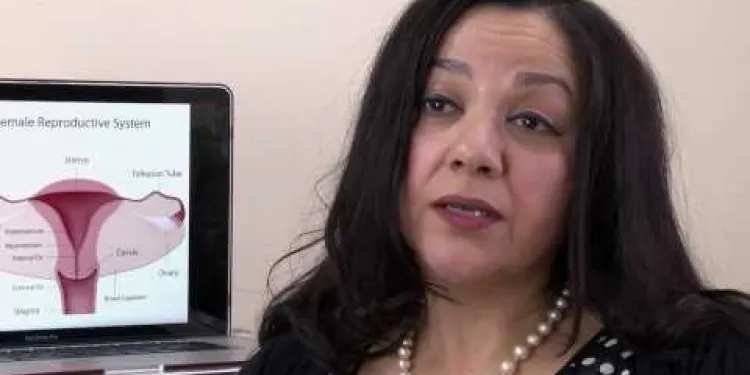
Chlamydia: The Silent Threat
Relevance: 43%
-
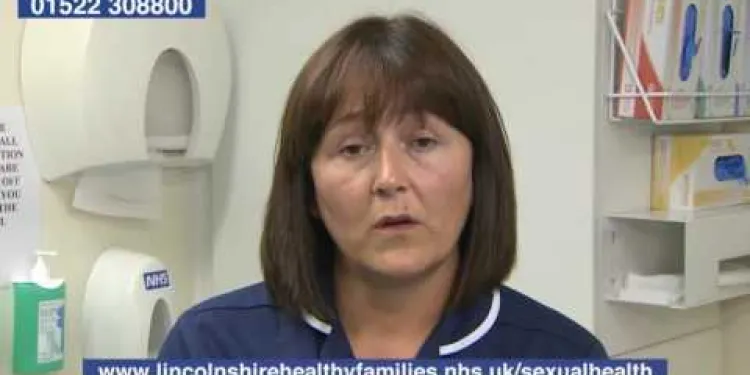
The symptoms of gonorrhoea
Relevance: 42%
-

What is Gonorrhoea?
Relevance: 41%
-

How often should one get tested for gonorrhoea?
Relevance: 41%
-

Can gonorrhoea be asymptomatic?
Relevance: 39%
-

Understanding Your Sexual Health - Gonorrhoea
Relevance: 39%
-

Can gonorrhoea be prevented?
Relevance: 38%
-

What should one do if they suspect they have gonorrhoea?
Relevance: 37%
-

Do morning urine tests give more accurate results?
Relevance: 37%
-

Is there a vaccine for gonorrhoea?
Relevance: 34%
-

How is gonorrhoea transmitted?
Relevance: 34%
-

What antibiotics are used to treat gonorrhoea?
Relevance: 34%
-

Are there any long-term effects of gonorrhoea?
Relevance: 32%
-

Can you still get gonorrhoea after treatment?
Relevance: 30%
-

Why is antibiotic resistance a concern with gonorrhoea?
Relevance: 30%
-

Let's Talk Sexual Health - Home Self Testing Kits
Relevance: 28%
-

Can gonorrhoea infect areas other than the genital organs?
Relevance: 27%
-

Let's Talk Sexual Health - Home Self Testing Kits
Relevance: 26%
-

Sexually transmitted infections STIs
Relevance: 26%
-
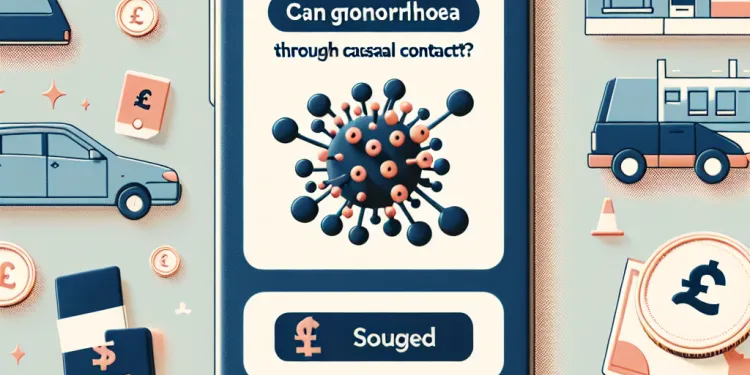
Can gonorrhoea be spread through casual contact?
Relevance: 24%
-

What is a pregnancy test?
Relevance: 24%
-

Is gonorrhoea treatable?
Relevance: 24%
-

What are the different types of pregnancy tests?
Relevance: 24%
-

Understanding Your Sexual Health - Pelvic Inflammatory Disease
Relevance: 23%
-
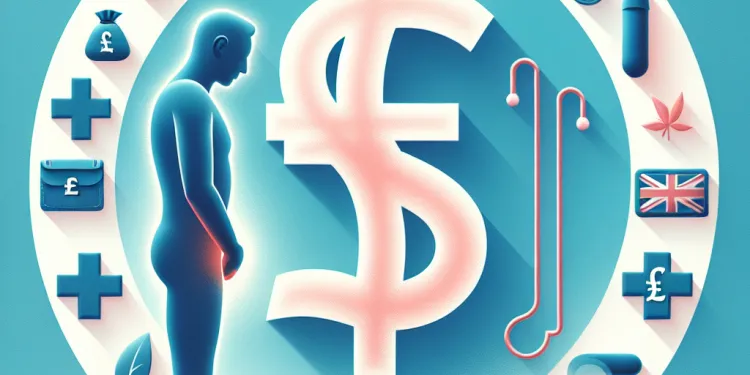
Can gonorrhoea cause complications if left untreated?
Relevance: 22%
-

How does a pregnancy test work?
Relevance: 22%
-

NHS STI (Sexually Transmitted Infections) Information Video
Relevance: 21%
-
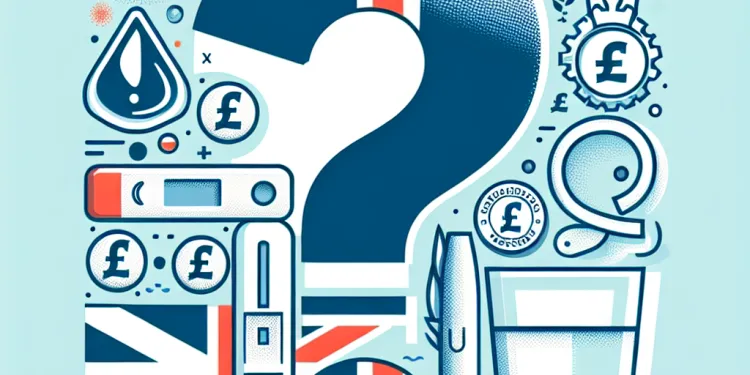
Can drinking a lot of water affect pregnancy test results?
Relevance: 21%
-

How soon can a pregnancy test detect pregnancy?
Relevance: 21%
-
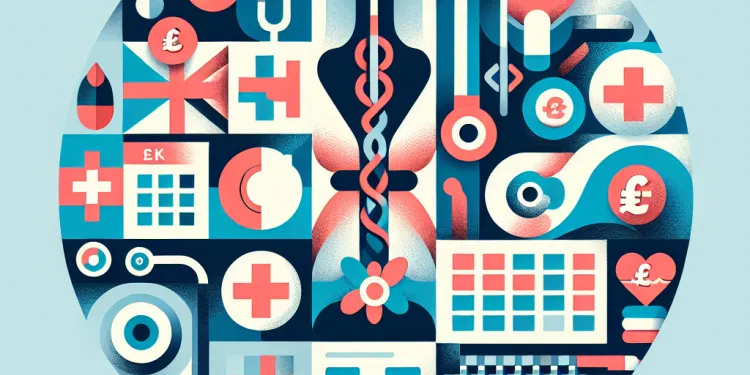
Can the test be performed during my menstrual period?
Relevance: 21%
-

What should I do if I get unclear results on a pregnancy test?
Relevance: 20%
Urine Test for Gonorrhoea and Chlamydia
Introduction
Urine tests for Gonorrhoea and Chlamydia are vital tools in diagnosing these common sexually transmitted infections (STIs). Chlamydia and Gonorrhoea can affect men and women of all ages, but they are particularly prevalent among sexually active teenagers and young adults. Early detection through urine testing is crucial for timely treatment and to prevent complications.Why Urine Tests are Important
Urine tests offer a non-invasive, straightforward method to detect Gonorrhoea and Chlamydia. These infections often do not present symptoms in their early stages, making them hard to detect without testing. Left untreated, they can lead to severe health complications, such as pelvic inflammatory disease (PID) in women and epididymitis in men. Both conditions can result in infertility. Moreover, untreated infections can increase the risk of contracting or transmitting HIV.How the Test is Conducted
The procedure for a urine test is simple and can often be completed at your local GP surgery, sexual health clinic, or through home testing kits in the UK. You will be asked to provide a urine sample, ideally early in the morning. The first part of the urine stream is collected because it contains the highest concentration of bacteria or viruses. The sample is then sent to a laboratory for analysis, where it is tested for the DNA of Chlamydia trachomatis and Neisseria gonorrhoeae, the bacteria responsible for Chlamydia and Gonorrhoea, respectively.Understanding the Results
Results from urine tests are usually available within a few days. A negative result means that no infection was detected. If the test is positive, it means you have either Gonorrhoea or Chlamydia, or both. It's critical to inform your sexual partners so they can get tested and treated, too. Early intervention with antibiotics is highly effective in eradicating these infections.Availability and Accessibility
In the UK, urine tests for STIs are widely available and can be accessed for free through the National Health Service (NHS). Many sexual health clinics offer walk-in services, and home testing kits can be ordered online, providing a convenient and discreet option.Conclusion
Urine tests for Gonorrhoea and Chlamydia play a crucial role in maintaining sexual health. Early detection through simple testing can prevent severe health complications and stop the spread of these infections. Accessible through the NHS and various other services, it's an essential step anyone who is sexually active should consider regularly.Urine Test for Gonorrhoea and Chlamydia
Introduction
A urine test helps find out if you have Gonorrhoea or Chlamydia. These are common infections you can get from sex. People of all ages can get them, but teenagers and young adults get them the most. It is important to test early with a urine test so you can get treatment and stop any problems.Why Urine Tests are Important
Urine tests are easy and don't hurt. They help find Gonorrhoea and Chlamydia. These infections often do not show signs at first. If not treated, they can cause big health problems. Women can get a disease called PID, and men can get epididymitis. Both can make having babies hard. Also, these infections can make it easier to get or pass on HIV.How the Test is Conducted
Doing a urine test is easy. You can do it at your local doctor’s office, a sexual health clinic, or even at home in the UK. You will need to give a urine sample, usually in the morning. Take the first part of the urine stream because it has more germs. The sample goes to a lab and they check it for the germs that cause Chlamydia and Gonorrhoea.Understanding the Results
You will get your urine test results in a few days. If it is negative, there is no infection. If it is positive, you have either Gonorrhoea, Chlamydia, or both. It is important to tell your sexual partners so they can also get tested and treated. Taking medicine like antibiotics can quickly cure these infections.Availability and Accessibility
In the UK, you can get urine tests for free from the NHS. Many sexual health clinics let you walk in without an appointment. You can also order home testing kits online; this is private and easy to do.Conclusion
Urine tests for Gonorrhoea and Chlamydia help keep you healthy. Testing early can stop serious health issues and prevent spreading the infections to others. You can easily get tested through the NHS and other services. If you are sexually active, consider regular testing.Frequently Asked Questions
What is a urine test for gonorrhoea and chlamydia?
A urine test for gonorrhoea and chlamydia is a diagnostic tool used to detect the presence of these sexually transmitted infections (STIs) by analysing a urine sample.
How accurate is a urine test for gonorrhoea and chlamydia?
Urine tests for gonorrhoea and chlamydia are highly accurate, with sensitivity and specificity rates typically above 90%. However, no test is 100% foolproof.
Do I need to prepare before taking a urine test for gonorrhoea and chlamydia?
You should avoid urinating for at least one hour before collecting the urine sample to ensure more accurate results.
How is the urine sample collected for the test?
You will need to provide a sample of the first part of your urine stream (first-catch urine) in a sterile container provided by the testing facility.
When should I take a urine test for gonorrhoea and chlamydia?
It is recommended to take the test if you have symptoms of an STI, have had unprotected sex, or have been notified by a partner that they tested positive for an STI.
How long does it take to get results from the test?
Test results are typically available within a few days, but the exact timing can vary depending on the testing facility.
Will the test detect other STIs?
No, the urine test specifically detects gonorrhoea and chlamydia. Separate tests are required for other STIs.
Can I get a urine test for gonorrhoea and chlamydia at my GP?
Yes, many GPs offer testing for STIs, including gonorrhoea and chlamydia. You can also visit a sexual health clinic for testing.
Is the urine test for gonorrhoea and chlamydia covered by the NHS?
Yes, testing for STIs, including gonorrhoea and chlamydia, is typically covered by the NHS.
Can a positive result from the urine test be a false positive?
While false positives are rare, they can occur. Confirmatory testing may be recommended if there is any doubt about the results.
What should I do if I test positive for gonorrhoea or chlamydia?
If you test positive, you should seek treatment from a healthcare provider, inform any sexual partners, and avoid sexual contact until treatment is complete.
Can the test be done at home?
Yes, there are home testing kits available that allow you to collect a urine sample and send it to a lab for analysis.
Are there any risks associated with the urine test?
Urine tests for gonorrhoea and chlamydia are safe and non-invasive, with no associated risks.
Can the test be used for both men and women?
Yes, the urine test for gonorrhoea and chlamydia can be used for both men and women.
Do I need to fast before taking the urine test?
No, there are no dietary restrictions or fasting requirements before taking a urine test for gonorrhoea and chlamydia.
What is a pee test for gonorrhoea and chlamydia?
A pee test checks your pee (urine) to see if you have gonorrhoea or chlamydia.
Gonorrhoea and chlamydia are germs that can make you sick. They are caught by having sex with someone who has them.
If you think you might be sick, you can talk to a doctor. They can help you take a pee test.
Using pictures or videos can help explain how the test works.
A urine test checks for gonorrhoea and chlamydia. These are germs that can make you sick. The test looks at your pee (urine) to see if you have these germs.
How good is a pee test for finding gonorrhoea and chlamydia?
Pee tests can find if you have gonorrhoea or chlamydia. They are usually very good.
If you need help, you can use a dictionary or ask someone you trust to explain words.
Talking to a doctor or nurse can also help. They can give you more information and answer your questions.
Pee tests for gonorrhoea and chlamydia work very well. They get it right more than 90 times out of 100. But no test is perfect.
If reading is tricky, try using tools that read the text out loud or explain words. Ask someone to help too if you can.
What should I do before a pee test for gonorrhoea and chlamydia?
If you need to take a pee test for gonorrhoea and chlamydia, here are some easy steps to follow:
- Try not to pee for 1 hour before your test. This helps get a better sample.
- Make sure you understand the test instructions. If not, ask someone to help you.
- If you have support tools, like picture guides or simple instructions, use them to help you understand what to do.
If you need help, ask a doctor or nurse. They can explain things clearly. Remember, it's okay to ask questions if you're unsure about anything!
Try not to pee for at least one hour before collecting the pee sample. This helps to get better results.
How do you get a pee sample for the test?
To get a pee sample, you pee into a clean cup. This is called a pee cup.
It is important to keep the pee clean. Try not to touch the inside of the cup.
If you need help, ask someone. They can show you the right way to do it.
Tools like pictures or videos can help you understand better.
You will need to give a pee sample. Collect the first bit of pee in a clean cup the testing place gives you.
When should I take a pee test for gonorrhoea and chlamydia?
If you think you might have an infection, it is good to take a pee test. Here is when to do it:
- Wait 1 or 2 weeks after you think you got infected.
- You can also talk to a doctor or nurse. They can tell you the right time to take the test.
A pee test can help find out if you have gonorrhoea or chlamydia. It is simple and does not hurt. If you need help, you can ask someone you trust to go with you.
Take the test if you feel sick, had sex without a condom, or if your partner told you they have an STI.
When will I know my test results?
You will know your test results in a few days. If you want to find out sooner, you can ask someone to help you call or check online. Using a calendar to mark the day you took the test and when you might get the results can be helpful.
You can usually get test results in a few days. How long it takes depends on where you get the test.
Does the test find other infections?
No, the pee test only finds two kinds of germs called gonorrhoea and chlamydia. You need different tests to find other kinds of germs that can make you sick.
If reading is hard, you can use tools that read out loud to help.
Can my doctor check my pee for gonorrhea and chlamydia?
Yes, your doctor can do a test. They will ask you to pee in a cup. This is to check if you have gonorrhea or chlamydia. It's important to tell your doctor if you think you might have these.
If you find reading hard, you can use tools like screen readers or ask someone to read with you. Pictures and simple diagrams can also help you understand better.
Yes, many doctors can test for STIs, like gonorrhoea and chlamydia.
You can also go to a sexual health clinic to get tested.
Does the NHS pay for the pee test for gonorrhoea and chlamydia?
Yes, the NHS usually pays for tests to check for STIs like gonorrhoea and chlamydia.
Can the urine test show a positive result by mistake?
Sometimes, test results can be wrong, but it does not happen often. If there is any doubt, another test might be suggested to make sure the results are correct.
What to do if you have gonorrhoea or chlamydia
If a doctor says you have gonorrhoea or chlamydia, don't worry! Here's what you should do:
1. See the Doctor: The doctor will give you medicine. It will help you get better.
2. Finish Your Medicine: Take all the medicine the doctor gives you. Even if you feel better, keep taking it until it is all gone.
3. Tell Your Partner: Let your boyfriend or girlfriend know. They should see a doctor too.
4. Don't Kiss Until You're Better: Wait until the doctor says you are all better to kiss or have close contact with your partner.
If you have questions, ask the doctor or a nurse. They are there to help you!
Support Tools: You can use drawings, apps, or talk to someone you trust to remember what to do.
If you find out you are sick, go see a doctor. Tell anyone you have kissed or touched. Don't kiss or touch anyone until you are all better.
Can you do the test at home?
You might be able to do the test at home. Here are some tips to help:
- Read the instructions carefully. Ask someone to help if you need.
- If the test is hard to understand, you can use pictures or videos.
- Set a timer so you don’t forget the time.
- Ask a friend or family member to be with you while you do the test.
If you are unsure, you can call a doctor or nurse to ask for help.
Yes, you can get special kits to test at home. These kits let you collect a wee sample and send it to a lab to check.
Are there any risks with the pee test?
No, the pee test is usually safe. Most people do not feel anything bad after the test.
If you are worried or have questions, you can ask a doctor or nurse to help you understand.
Urine tests for gonorrhoea and chlamydia are safe and easy. They do not cause any harm or have any risks.
Can both men and women use the test?
Yes, a pee test can check for gonorrhea and chlamydia in both men and women.
Do I need to stop eating before my pee test?
Before your pee test, ask your doctor if you need to stop eating or drinking. Sometimes, you can have food and drinks as normal. It's always best to check and ask what you need to do.
Here are some helpful things you can do:
- Ask someone you trust to help you understand the instructions.
- Write down what the doctor tells you, so you don't forget.
- Use a voice recorder on your phone to capture instructions if you have difficulty remembering.
No, you do not need to stop eating or drinking before a pee test for gonorrhoea and chlamydia.
Useful Links
- Ergsy carfully checks the information in the videos we provide here.
- Videos shown by Youtube after a video has completed, have NOT been reviewed by ERGSY.
- To view, click the arrow in centre of video.
- Most of the videos you find here will have subtitles and/or closed captions available.
- You may need to turn these on, and choose your preferred language.
- Go to the video you'd like to watch.
- If closed captions (CC) are available, settings will be visible on the bottom right of the video player.
- To turn on Captions, click settings .
- To turn off Captions, click settings again.
More Items From Ergsy search
-

Urine test for Gonorrhoea and Chlamydia
Relevance: 100%
-

Urine test for Gonorrhoea and Chlamydia
Relevance: 100%
-

Vaginal Swab test for Gonorrhoea and Chlamydia
Relevance: 71%
-

Rectal swab test for Gonorrhoea and Chlamydia
Relevance: 68%
-

Pharyngeal swab for Gonorrhoea and Chlamydia
Relevance: 63%
-

Getting tested for Chlamydia
Relevance: 53%
-

NHS - Chlamydia
Relevance: 45%
-

What is chlamydia?
Relevance: 44%
-

How is gonorrhoea diagnosed?
Relevance: 43%
-

Chlamydia: The Silent Threat
Relevance: 43%
-

The symptoms of gonorrhoea
Relevance: 42%
-

What is Gonorrhoea?
Relevance: 41%
-

How often should one get tested for gonorrhoea?
Relevance: 41%
-

Can gonorrhoea be asymptomatic?
Relevance: 39%
-

Understanding Your Sexual Health - Gonorrhoea
Relevance: 39%
-

Can gonorrhoea be prevented?
Relevance: 38%
-

What should one do if they suspect they have gonorrhoea?
Relevance: 37%
-

Do morning urine tests give more accurate results?
Relevance: 37%
-

Is there a vaccine for gonorrhoea?
Relevance: 34%
-

How is gonorrhoea transmitted?
Relevance: 34%
-

What antibiotics are used to treat gonorrhoea?
Relevance: 34%
-

Are there any long-term effects of gonorrhoea?
Relevance: 32%
-

Can you still get gonorrhoea after treatment?
Relevance: 30%
-

Why is antibiotic resistance a concern with gonorrhoea?
Relevance: 30%
-

Let's Talk Sexual Health - Home Self Testing Kits
Relevance: 28%
-

Can gonorrhoea infect areas other than the genital organs?
Relevance: 27%
-

Let's Talk Sexual Health - Home Self Testing Kits
Relevance: 26%
-

Sexually transmitted infections STIs
Relevance: 26%
-

Can gonorrhoea be spread through casual contact?
Relevance: 24%
-

What is a pregnancy test?
Relevance: 24%
-

Is gonorrhoea treatable?
Relevance: 24%
-

What are the different types of pregnancy tests?
Relevance: 24%
-

Understanding Your Sexual Health - Pelvic Inflammatory Disease
Relevance: 23%
-

Can gonorrhoea cause complications if left untreated?
Relevance: 22%
-

How does a pregnancy test work?
Relevance: 22%
-

NHS STI (Sexually Transmitted Infections) Information Video
Relevance: 21%
-

Can drinking a lot of water affect pregnancy test results?
Relevance: 21%
-

How soon can a pregnancy test detect pregnancy?
Relevance: 21%
-

Can the test be performed during my menstrual period?
Relevance: 21%
-

What should I do if I get unclear results on a pregnancy test?
Relevance: 20%


